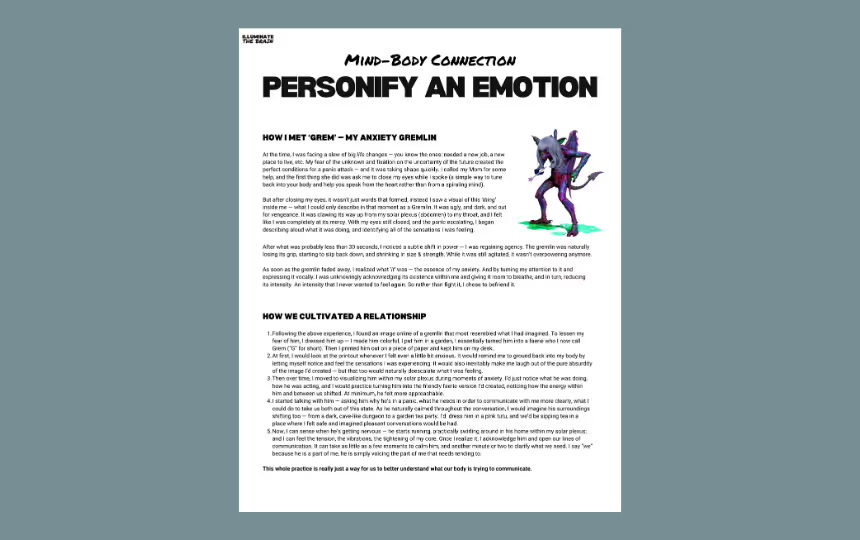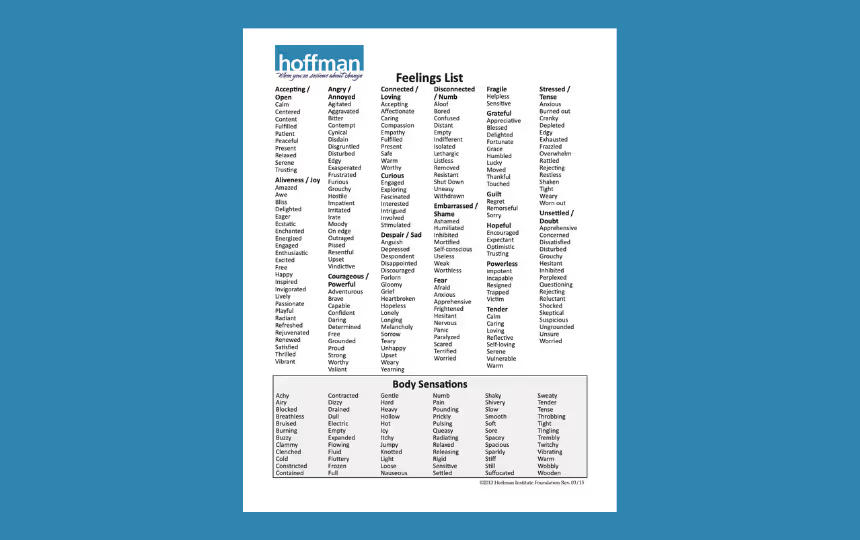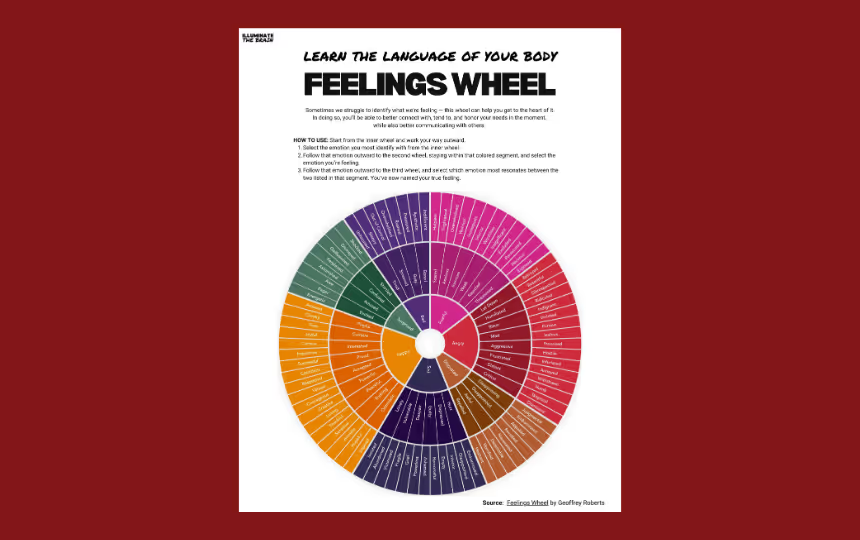Let’s befriend our scariest emotions, so when they rear their heads, instead of falling victim to their control, we can instead say “hello, old friend – what are we needing today?”
Start by becoming aware of your emotions. When you notice a recurring, heightened emotion that feels particularly unpleasant, undesirable, or unclear, take note of where you feel it in the body, what it feels like (physical sensations), and perhaps what it sounds like or looks like.
Let your imagination work with your body to personify what you're feeling. Give the emotion a:
You’ll build this character out naturally over time as you become more attuned to the nuanced sensations you feel when it’s present – your character will “act” accordingly based on those sensations. Your imagination can craft the imagery that helps you better comprehend it.
Just like any relationship, this will take time. Let it. Get to know each other, talk to each other, ask questions. Communicate as often as you like, and assure it that you are aware of its presence, available to hear what it needs to express, and grateful for its sounding of the alarm anytime it needs to notify you that something is off. In those moments, acknowledge that you heard it, assure it that you can take it from here, and allow it to return to its neutral state.
The more you tune into it, the more you'll pick up on the cues of what that emotion is trying to express. By maintaining an open line of communication with our emotions, we eliminate their need to sound more intensive alarms (i.e. like panic attacks). As you become more acquainted and learn to trust each other, the time in which it takes you to notice it, acknowledge it, and take action accordingly will shorten.
To better describe how you can do this, I am sharing my personal recount of how I met my dear friend, Grem – the anxiety gremlin who first made himself known during the start of a panic attack. Learn more and meet Grem in our Personify an Emotion download linked below in "pair with."
Communicating with something as elusive as an emotion can sometimes feel one-sided. So let’s give that emotion a face, a voice, a presence, just as any other human has in this world, so it can communicate back. Personify an emotion by crafting a character that embodies how it looks and feels within you. Then build a personal relationship with it so you can more clearly understand what that emotion (your body) is trying to tell you each time its triggered.
This practice is really just a way for us to better understand what our body is trying to communicate. The more we can identify the initial sensations our body uses to signal a triggered emotion, the more quickly we can register its meaning and in turn respond from a place that honors our Self. What once needed to be a sounding alarm to get our attention, can eventually become a gentle whisper – because we’ve learned to speak and trust the language of our body: emotions.
Use these while you give it a go . . .

Downloadable PDF to reference while you create a relationship with your emotions.

Downloadable PDF created by the Hoffman Institute.

Mindfully journey through your body to identify, connect with, and release places of tension, stored emotion, or resistance.

Process trauma and regulate the body with rhythmic, alternating side-to-side taps, sounds, or visuals.
Close your eyes and speak from the heart. Sign up for voice lessons.
Explore the topic further . . .

Learn the language of your body to better understand your needs, desires, boundaries, and truth.

Healing trauma and restoring wholeness with the internal family systems model.

Downloadable PDF to reference while you learn your emotions.

Downloadable PDF to reference while you learn your emotions.

Downloadable PDF created by Brené Brown.
Passenger Consciousness

Learn to identify, process, and articulate 87 distinct emotions in order to courageously build deeper, more authentic relationships.

Lorem ipsum dolor sit amet, consectetur adipiscing elit. Suspendisse varius enim in eros elementum tristique. Duis cursus, mi quis viverra ornare, eros dolor interdum nulla, ut commodo diam libero vitae erat. Aenean faucibus nibh et justo cursus id rutrum lorem imperdiet. Nunc ut sem vitae risus tristique posuere.
Lorem ipsum dolor sit amet, consectetur adipiscing elit. Suspendisse varius enim in eros elementum tristique. Duis cursus, mi quis viverra ornare, eros dolor interdum nulla, ut commodo diam libero vitae erat. Aenean faucibus nibh et justo cursus id rutrum lorem imperdiet. Nunc ut sem vitae risus tristique posuere.